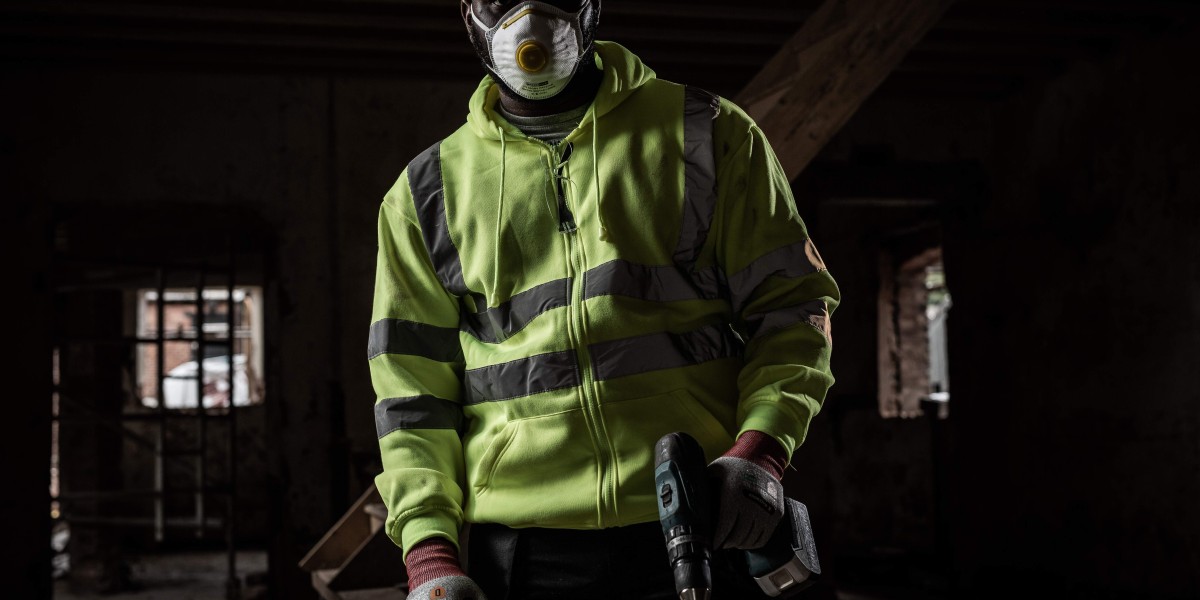The Importance of Hi-Vis Clothing
In workplaces with high-risk conditions, the visibility of employees is critical to maintaining a safe working environment. Hi-vis clothing serves as a visual signal to others, alerting them to the presence of workers and minimizing the risk of accidents. Key benefits of hi-vis clothing include:
- Improved Visibility: The bright, fluorescent colors and reflective strips of hi-vis clothing make workers stand out in both daylight and low-light conditions, ensuring they are seen from a distance.
- Enhanced Safety: By increasing visibility, hi-vis clothing helps prevent accidents, particularly in environments with moving vehicles, heavy machinery, or areas with poor lighting.
- Compliance with Safety Regulations: Many industries are required by law to provide workers with hi-vis clothing to meet safety standards, such as those set by OSHA (Occupational Safety and Health Administration) and ANSI (American National Standards Institute).
- Worker Confidence: Workers who wear hi-vis clothing feel more secure in their roles, knowing they are better protected from hazards.
Types of Hi-Vis Clothing
Hi-vis clothing is available in various forms, each suited to different work environments and specific hazards. Here are the most common types:
Hi-Vis Vests
Hi-vis vests are lightweight garments worn over regular clothing. These vests are perfect for workers who need to be visible in environments with moderate risk, such as roadwork or warehouse settings.- Key Features: Bright fluorescent colors (usually yellow, orange, or green) and reflective strips across the torso and shoulders for visibility.
- Ideal for: Construction sites, roadwork, event staff, and warehouse workers.
Hi-Vis Jackets and Coats
Hi-vis jackets and coats offer full-body coverage and are ideal for workers who need additional protection from the elements. These garments are often designed for harsher weather conditions, such as rain or cold temperatures, and are equipped with reflective elements to ensure visibility.- Key Features: Waterproof, insulated, and breathable fabrics; often with hoods and adjustable cuffs for comfort.
- Ideal for: Road workers, emergency responders, outdoor construction workers, and utility crews.
Hi-Vis Shirts and Pants
Hi-vis shirts and pants are commonly worn in full-body visibility scenarios, providing both comfort and safety. These garments are designed for workers who require both mobility and protection from environmental hazards.- Key Features: Reflective tape or strips along the chest, arms, and legs for increased visibility.
- Ideal for: Logistics, construction workers, and workers in outdoor environments.
Hi-Vis Coveralls
Hi-vis coveralls are full-body protective suits worn to keep workers visible while providing protection from various environmental hazards. These are essential for workers in industries where full-body coverage is necessary, such as chemical processing or manufacturing.- Key Features: All-over visibility with reflective strips, and additional protection against hazards like chemicals or extreme temperatures.
- Ideal for: Manufacturing, mining, chemical processing, and oil and gas industries.
Hi-Vis Hats and Headgear
Hi-vis hats and hard hats are designed to enhance visibility at head level. These are often required in construction zones or roadworks where workers are at risk of falling debris or where visibility from above is important.- Key Features: Bright colors and reflective bands to increase head-level visibility, often paired with protective hard hats.
- Ideal for: Construction workers, road crews, and emergency responders.
Hi-Vis Gloves and Footwear
For comprehensive visibility, hi-vis gloves and footwear are often worn in conjunction with other workwear. These accessories ensure that hands and feet are clearly visible, reducing the risk of accidents or mishaps.- Key Features: Bright colors and reflective strips on gloves and footwear for enhanced visibility.
- Ideal for: Warehouse workers, logistics personnel, and outdoor workers.
Key Features of Hi-Vis Clothing
For hi-vis clothing to be effective, it must meet specific design and safety standards. Here are the essential features that make hi-vis garments suitable for hazardous work environments:
Bright Fluorescent Colors
Hi-vis clothing is typically made from bright fluorescent fabrics such as neon yellow, orange, or green. These colors are highly visible in both daylight and low-light conditions, making it easier for workers to be seen from a distance.Reflective Stripes and Tape
Reflective strips or tape are essential for ensuring visibility in low-light conditions such as early mornings, evenings, or at night. These strips are made from reflective materials that bounce light back to its source, making the wearer visible even from far away.Compliance with Safety Standards
Hi-vis clothing must comply with industry safety standards. In the United States, ANSI/ISEA 107 sets the guidelines for hi-vis apparel, including the classification of garments based on visibility levels:- Class 1: For workers in low-risk environments, such as those with slow-moving vehicles and low traffic.
- Class 2: For workers in moderate-risk environments, such as those with faster-moving traffic or higher worker density.
- Class 3: For workers in high-risk environments, where maximum visibility is required, such as roadways with high-speed traffic or construction zones.
Durability
Hi-vis clothing is designed to withstand the rigors of work environments, with durable fabrics that resist wear and tear. This ensures the garments continue to provide optimal visibility and protection over time, even with frequent use.Weather Resistance
Many hi-vis garments are designed to provide protection against the elements, including rain, wind, and cold temperatures. Weather-resistant and insulated fabrics keep workers safe and comfortable in various weather conditions.
Choosing the Right Hi-Vis Clothing
Selecting the right hi-vis clothing depends on the nature of the job, the level of risk, and environmental conditions. Here are some factors to consider when choosing hi-vis clothing:
Work Environment
Evaluate the risks in the work environment, such as exposure to moving vehicles, machinery, or hazardous weather conditions. Workers exposed to higher risks, such as highway construction crews, will need Class 3 rated clothing, while those in lower-risk environments may only need Class 1 or Class 2.Comfort and Fit
The comfort of the worker is important for ensuring they can perform their duties without restriction. Choose garments that fit well and allow for ease of movement, especially in jobs requiring physical labor.Weather Conditions
Consider the temperature and weather conditions workers are exposed to. For colder climates, opt for insulated or waterproof hi-vis clothing, while in warmer climates, lightweight and breathable fabrics are necessary for comfort.Compliance with Regulations
Ensure that the chosen hi-vis clothing meets the relevant safety standards for your industry. This ensures that workers are not only safe but also compliant with legal regulations regarding workplace safety.
Conclusion
Hi-vis clothing is an essential part of workplace safety, especially in high-risk environments where visibility is critical to preventing accidents. By ensuring that workers are seen, these garments reduce the likelihood of collisions, injuries, and fatalities. Whether it’s high-visibility vests, jackets, pants, or coveralls, hi-vis clothing is a key investment in the safety and protection of workers. By choosing the right type of workwear based on the environment and complying with safety standards, employers can create a safer, more secure working environment for their teams.










